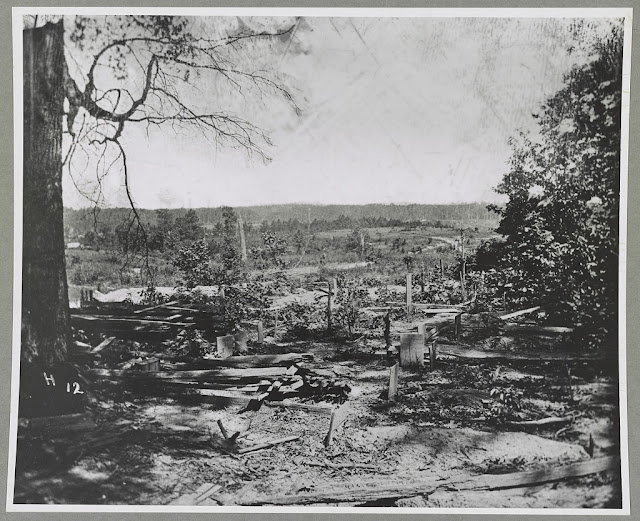By the summer of that year, General Joseph E Johnston had completely fallen out of favor with Jefferson Davis. The defensive-minded approach the general had been taking was not the direction the Confederate president desired the army to go. Davis wanted a commander who would take the fight to the Federals in order to help alleviate pressure from General Robert E. Lee in the east. Johnston was simply not getting the job done, and so Davis replaced him with someone he believed would: General John Bell Hood. What Hood lacked in personal mobility due to a bum arm and a missing leg, he made up for with an aggressive mentality. Just three days after Davis made him commander of the Army of Tennessee, the eager general attacked Major General George H. Thomas' Army of the Cumberland in order to garner momentum during the Atlanta campaign.
Approximately 3 p.m. on July 20th, 1864, Featherston's Mississippians rose from their chalky, red clay trenches and charged through marsh grass of Tanyard Branch, crossed an open field, and dashed up Collier Ridge toward the mill that bore its name. There, the Confederates ran into Colonel John Coburn's brigade, which had rushed to plug a gap between the divisions of Brigadier General John W. Geary and Brigadier General John Newton. This gap had been the objective of Featherston and was
 |
| Featherston's guidon in the Mississippi Museum of History It was captured at the Battle of Franklin, 11/30/1864. Photo by me. |
Joining this regiment in the Mississippi Brigade at Peach Tree Creek was the 3rd Mississippi Infantry, the unit in which several of my relatives served. They somehow made it out alive.
Also among Featherston's "Devils" were at least two women who fell that bloody day. One ultimately lost her foot. She had served in the Confederate army for over two years. Private Judson L. Austin of the 19th Michigan Infantry mentioned another one in a letter home to his wife. "She was shot through the breast & through the thy & was still alive & as gritty a reb as I ever saw."
With such grievous wounds, it is doubtful this woman soldier made it back to the Magnolia State.
 |
| Letter of Pvt. Judson L. Auston, 19th MI Infantry mentioning a wounded female soldier Available online from the Bentley Historical Library, University of Michigan |
 |
| From a plaque at Tanyard Creek Park The green camera marks the location where Barnard took the picture above |
 |
| Photo by me |
 |
| mill stones from Collier's Mill the location of murderous fighting photo by Mark Hidlebaugh |
 |
| Tanyard (Branch) Creek Featherston crossed this branch and then advanced to the right of it, through what is now Tanyard Creek Park in the picture above. Photo by Mark Hidlebaugh |
These women were not the only ones who remained on the field after Hood abandoned it, along with his casualties, to the Federals.
Pennsylvania surgeon James L. Dunn mentioned that Federal medical personnel treated several female soldiers who were picked up and brought to the hospital. Another Pennsylvanian serving in Geary's division said that two women were discovered among the Confederate prisoners. Unfortunately, there is not enough information to determine if these female fighters were the same women included in Dunn's tally.
Meanwhile, an Illinois soldier in Newton's division recorded in his diary that there were seven dead women and one wounded found among the Southern casualties. These were not the only uncommon Confederates at the Battle of Peach Tree Creek. Interestingly, the Illinoisan also mentioned that a male mulatto was among the wounded prisoners.
With these tallies, this places the number of women soldiers who were killed, wounded, or captured at the Battle of Peach Tree Creek at approximately ten, rendering it the bloodiest battle of the Civil War for them.
At least one survived the horrendous battle, an unnamed young and freckled woman with Brigadier General Francis M. Cockrell's Missouri Brigade, which was held in reserve.behind Major General Edward C. Walthall's division. Though the Missourians, commanded by Colonel Elijah Gates in the absence of Cockrell who was recovering from a wound, was not directly involved in the battle, they nevertheless received artillery fire.
 |
| Peachtree Creek Photo by Mark HIdlebaugh |
In my book, I go into more detail about the experiences of the women who fought at this battle.
*Note: today, you will commonly see the name of the battle and the creek written as one word. However, back then, it was spelled as two words, which is why I have chosen to spell it "Peach Tree Creek."
Until next formation....rest.



No comments:
Post a Comment